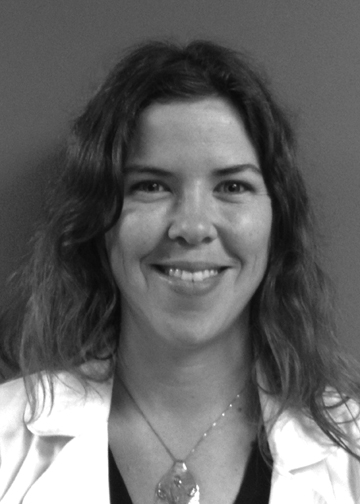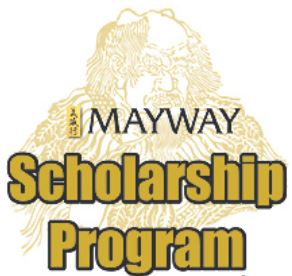Herbal Wisdom Over the Counter
 Michele Heneghan is a student at New England School of Acupuncture. She submitted this essay to the Mayway Scholarship Program and won the Mayway Scholarship.
Michele Heneghan is a student at New England School of Acupuncture. She submitted this essay to the Mayway Scholarship Program and won the Mayway Scholarship.
Chinese herbal medicine has been used for thousands of years as a safe and effective form of health care. Everyone needs health care, but common every day ailments can often be resolved with simple remedies available over the counter - aspirin for a headache, Ben-Gay for a sore back, Tums for your heart burn. Of course, you must be evaluated by a medical professional, and probably receive some prescription medicine, if problems persist or if your symptoms are more serious. I believe that some Chinese herbal remedies should be available for everyday ailments in a similar way to other simple, over the counter remedies, with stronger remedies available from a Chinese herbalist by prescription only.

Traditional Chinese medicine is widely accepted as part of the healthcare system by 1.3 billion Chinese, creating a market in China for patent herbal formulas that reached $13 billion in 2011 (Jie & Hongyi , 2013). Chinese herbal medicine is being increasingly used worldwide, and has been effective for treatment of both common ailments and more serious disorders. There are currently 53 acupuncture schools registered with the CCAOM in the US, generating trained acupuncturists and herbalists every year.
The popularity of Chinese herbal medicine continues to increase as more people receive effective treatment. Drug companies from around the world are exploring opportunities to create products utilizing traditional Chinese medicine (TCM) as these remedies become more popular in western markets. Sanofi- Aventis SA, France’s largest pharmaceutical manufacturer, has worked in conjunction with the Hong Kong University of Science and Technology to develop traditional Chinese medicines for treatment of diabetes and cancer. In 2009, Novartis set up a six-year research partnership with the Shanghai Institute of Materia Medica, to identify and test the pharmacologic properties of some traditional medicines. GSK and AstraZeneca are also currently conducting TCM research in China (Jie & Hongyi, 2013). This increasing attention has led to the development of new drugs like Artemesinin, developed by Novartis working closely with partners in China. Artemesinin, derived from Qing Hao (Artemesia annua), is used to make malaria vaccine that is now distributed worldwide (Jie & Hongyi, 2013).
While the attention paid by drug companies to the efficacy of TCM is increasing public awareness, it is critical to preserve our traditional methods of plant preparation and combination to retain the safety and efficacy of these traditional medicines. Proper traditional methods of preparation and combination using whole plant material both reduce toxicity of certain medicinals and increase the concentration of active ingredients.
In many cases it is the whole plant rather than an isolated chemical that yields the best results, since plants contain numerous chemical constituents that often work synergistically together to achieve the desired effect. A recent study showed that a single dose of the dried leaves of the plant Artemesia annua was more effective than a comparable dose of the purified drug for killing malarial parasites. Bioavailable artemesinin increased 40-fold in the bloodstream of mice fed the whole plant, which may indicate synergistic benefits resulting from the presence of additional anti-malarial compounds in A. annua (Elfawal et al 2012).
Anti-malarial activity has also been documented in related plant species that do not produce artemesinin. More than a dozen other sequesterpines found in A. annua have not yet been fully investigated, some of which have shown promise for killing parasites in rodents. In an effort to control resistance to monotherapies, artemesinin is only prescribed in combination with other anti-malarials as Artemesinin Combination Therapy (ACT) (Elfawal et al 2012). However, whole plant A. annua may properly be considered an innovative combination therapy rather than simple mono- therapy, given the complex nature of the plant and its many constituents. Utilizing the whole plant as combination therapy may provide a low cost natural alternative to the current ACT regimen (Elfawal et al 2012).
Evidence supports the assertion that the traditional herb combinations, proportions and preparation methods increase the efficacy of Chinese herbal formulas. In a recent study, Dang Gui Bu Xue Tang (DBT) was traditionally prepared by boiling Dang Gui (A. sinensis) and and Huang Qi (A. membranecus) together in a 1:5 ratio and compared with extracts derived from Huang Qi (HQ) alone, Dang Gui (DG) alone and DG and HQ boiled separately then mixed together in a 1:5 ratio. The traditionally prepared DBT had a greater stimulatory effect on bone cell proliferation, and genomic analysis revealed that a specific set of genes were regulated by only by DBT. Researchers theorize that DBT may contain additional chemicals that are not present in DG or HQ alone, and that boiling DG and HQ together increases the solubility of these chemicals. DBT contained higher amounts of astragaloside IV, calycosin, formononetin, and ferulic acid compared with the single herb extracts.(Choi R., et al. 2011)
Traditional herb combinations also reduce the toxicity and buffer any harsh actions of the constituent herbs. Starting in April 2004, products containing ephedrine alkaloids, including Ephedra sinica (Ma Huang), were banned for sale in the US. In losing the use of Ma Huang we lose one of the most important herbs in the Chinese pharmacopoeia. Underscoring its importance, it is the first herb mentioned in Chinese Herbal Medicine Materia Medica (Bensky, Clavey and Stoger) and Chinese Medical Herbology and Pharmacology (Chen and Chen), the two primary materia medica texts used to train Chinese herbalists in the US. Ma Huang appears in more than a dozen common Chinese herbal formulas and has been used to safely treat respiratory conditions for thousands of years. None of the adverse effects discussed in the RAND Report involved use of Ma Huang in Chinese herbal formulas administered under Chinese medicine treatment protocols (AAOM 2004).
It is important to prevent improper use of our strong acting Chinese herbs by the general public, in order to avoid their being mislabeled as toxic and dangerous. We must emphasize that many allopathic modern pharmaceuticals available by prescription and over the counter can also cause serious side effects if incorrectly used. Adverse events related to pharmaceuticals in fact represents the fourth leading cause of death in the US (AAOM 2004). By limiting the use of stronger acting herbs to a prescription from a Chinese herbalist, we can both educate patients and protect them against the adverse consequences of improper use.
Chinese herbal medicine may be advanced in the US by making Chinese herbal remedies for everyday ailments available over the counter, with indications (i.e., symptoms) and contraindications clearly labeled to educate the consumer about proper use. Stronger remedies should be made available only through a licensed practitioner. It is important to promote the use of traditional Chinese formulas at their intended dosage and preparation method, since these traditional formulas and whole plants are very safe and in many cases more effective than the isolated chemical constituents. DBT (Dang Gui Bu Xue Tang) has been used over 800 years in China, which has been proven to be safe for humans (Choi R., et al. 2011). Familiar Chinese herbs like ginseng are already available at health food stores nationwide alongside Western herbal remedies such as echinacea, chamomile and goldenseal. Public awareness of Chinese herbal medicine and its benefits might be increased by putting formulas like Yin Qiao San alongside herbals such as echinacea tincture, making these remedies available to more people and advancing the practice of Chinese medicine in the US.
In summary, I believe that having Chinese herbal formulas for common ailments more available in drugstores and natural food stores would advance Chinese medicine and benefit consumers. However, stronger herbal remedies that have potentially dangerous side effects when used improperly should be available by prescription only from a Chinese herbalist. This approach would allow consumers to easily obtain safe and effective remedies for every day ailments such as the common cold, while insuring proper use of the stronger medicinal herbs. Increasing the availability of Chinese herbal remedies will increase consumer awareness and advance Chinese medicine as more people have the chance to use them for everyday ailments.
References
- AAOM Position Statement: Ephedra (Ma Huang). (2004). American Acupuncturist, 3013-15.
- Choi, R., Gao, Q., Cheung, A., Zhu, J., Lau, F., Li, J., & ... Tsim, K. (2011). A chinese herbal decoction, danggui buxue tang, stimulates proliferation, differentiation and gene expression of cultured osteosarcoma cells: genomic approach to reveal specific gene activation. Evidence-Based Complementary And Alternative Medicine: Ecam, 2011307548. doi:10.1093/ecam/nen085
- Elfawal MA, Towler MJ, Reich NG, Golenbock D, Weathers PJ, et al. (2012) Dried Whole Plant Artemisia annua as an Antimalarial Therapy. PLoS ONE 7(12): e52746. doi:10.1371/ journal.pone.0052746
- Jie, L., & Hongyi , W. (2013, 02 20). TCM demand grows globally. China Daily USA. Retrieved from http://usa.chinadaily. com.cn/business/2013- 02/20/content_16238951.htm

